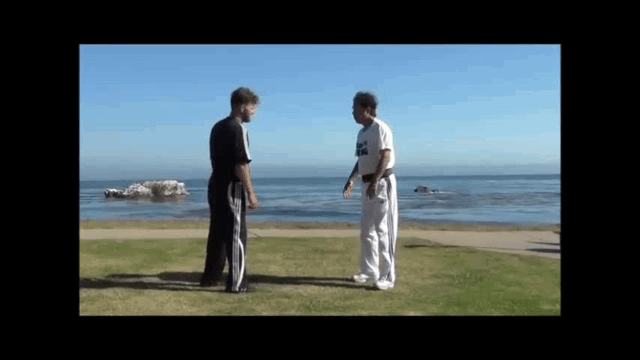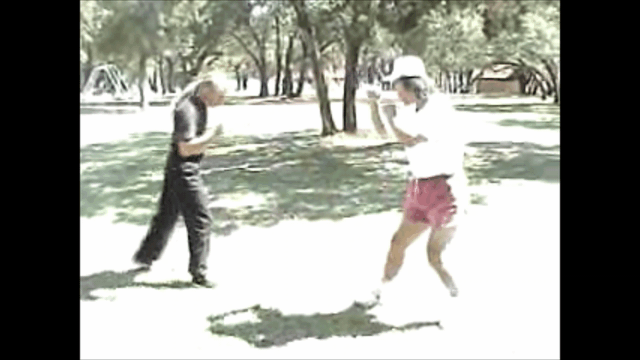These are good illustrations of some of the concepts I mentioned, such as using the sticky jab to clear a guard or momentarily blind the opponent.This to me these would be examples of "leaving the punch extended." TMA often have strikes that are done when the opponent can least resist it. It would be like saying that I can defend against a front kick while punching with my lead hand. If someone kicks under my punch, then there is nothing I can do to defend against that strike including tightening up my stomach and brace for impact. When I "ran into a punch" there was nothing I could have done to prevent getting hit by that fist. There are some things that once an action has been taken, there is nothing that one can do until your action is complete. Which is why step 1 + Step 2 is a better striking approach (when available) than doing step 1, then step 2. There are other examples of the extended punch. Unfortunately, not enough kung fu people out there with video of their fights showing the techniques they trained. Maybe in 5 more years, we'll start to see them?
(Omitted the videos in my quote because the forum limits number of video links in a comment)
Cus D'Amato's body jab does look pretty similar to the JowGa version. I should note that in application he would not leave that extended the way he did in that clip with Ali. He just left it out for a moment to demonstrate the form of the technique.I'll see if I can find other examples.
(Omitted the videos in my quote because the forum limits number of video links in a comment)
Here's some more videos showing use of the extended arm (which can either be a more prolonged long guard or just leaving the arm out for a short while after throwing a punch):





